Why We Picture Bombs As Round Black Balls with a Burning Wick
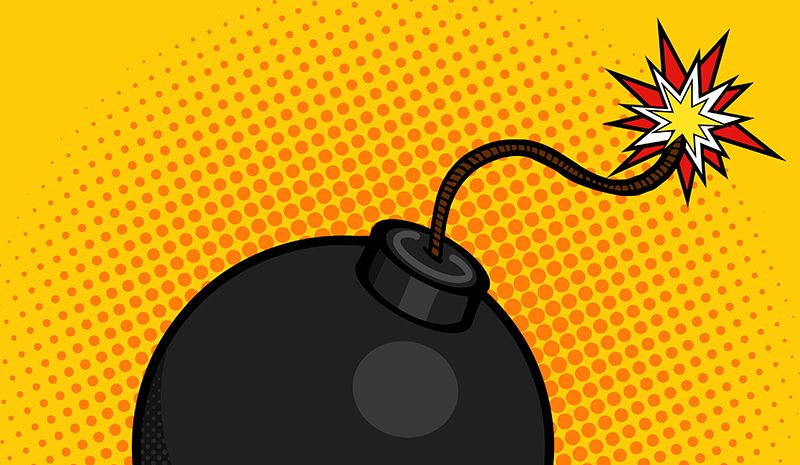
(Photo: Alexander_P/shutterstock.com)
In 1920, the popular newspaper comic strip Jerry on the Job was adapted by Bray Studios into a few animated films. In “The Bomb Idea,” Jerry and another character read that “Bolsheviki” are on the loose throughout the country, and that all citizens should be on alert. Shortly after, a man arrives carrying a heavy, black sphere. Jerry and his friend panic, assuming the item is a bomb, when eventually it is revealed to just be a bowling ball. But it’s clear that by 1920, everyone knew what a bomb looked like.
Except, by 1920, bombs didn’t really look like that anymore. They hadn’t for nearly 50 years, as nitroglycerin and dynamite began replacing black powder as the explosive of choice. However, the black, spherical bomb, wick slowly burning away to a boom, has remained the understood image for an explosive. From Looney Tunes to Adam West’s Batman to jokes on Homestar Runner, this is what our bombs look like.
And cartoonists have shaped that perception the whole way. It turns out that bombs and cartoons grew up together.
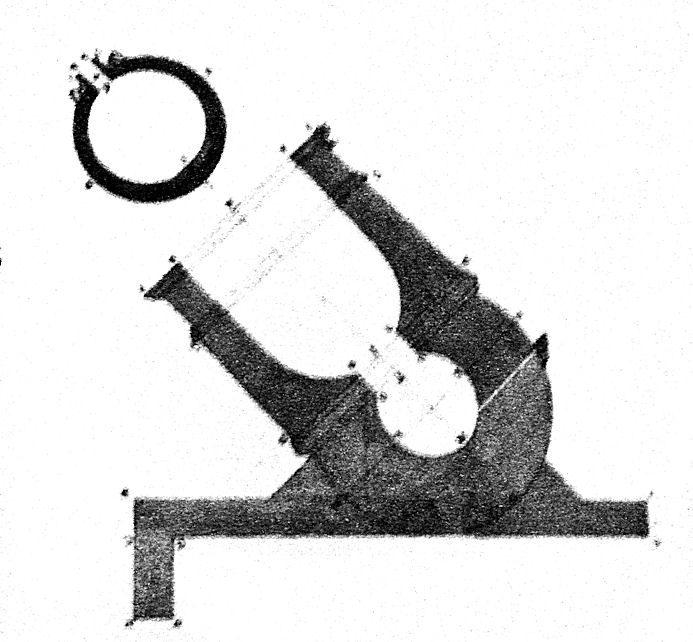
An 18th-century French mortar bomb. (Photo: Public Domain/WikiCommons)
Cartoons have always relied on visual shorthand; the whole point of the medium is to convey as much information as possible into a small amount of space. But bombs actually did look like that for a while. According to Jack Kelly, historian and author of Gunpowder: Alchemy, Bombards & Pyrotechnics, those bombs were specifically mortar bombs that used gunpowder, now referred to as black powder, as an explosive. “Gunpowder was invented by the Chinese around 1000 AD and it reached Europe in the 1300s, where it was highly developed until after the civil war,” said Kelly. “The Civil War was the last great gunpowder war.” Ignited, uncontained gunpowder will burn, but for it to explode the gas pressure needed to be built up in a sealed container. Often, a spherical one made the most sense, since the shape was aerodynamic and could be made of two halves with one seal, instead of a box with many sides.
They were also dark, being made of cast iron or other metals, both to ensure sturdiness and to maximize shrapnel after the explosion. The only thing inaccurate about the cartoon depiction of bombs is the string wick, says Kelly. “Fuses were made of wood and they’d be drilled down through the center, and they’d be packed very solidly with gunpowder that would burn at a predictable rate,” he says, “The idea of a string fuse coming out of the bomb is really a fantasy.”
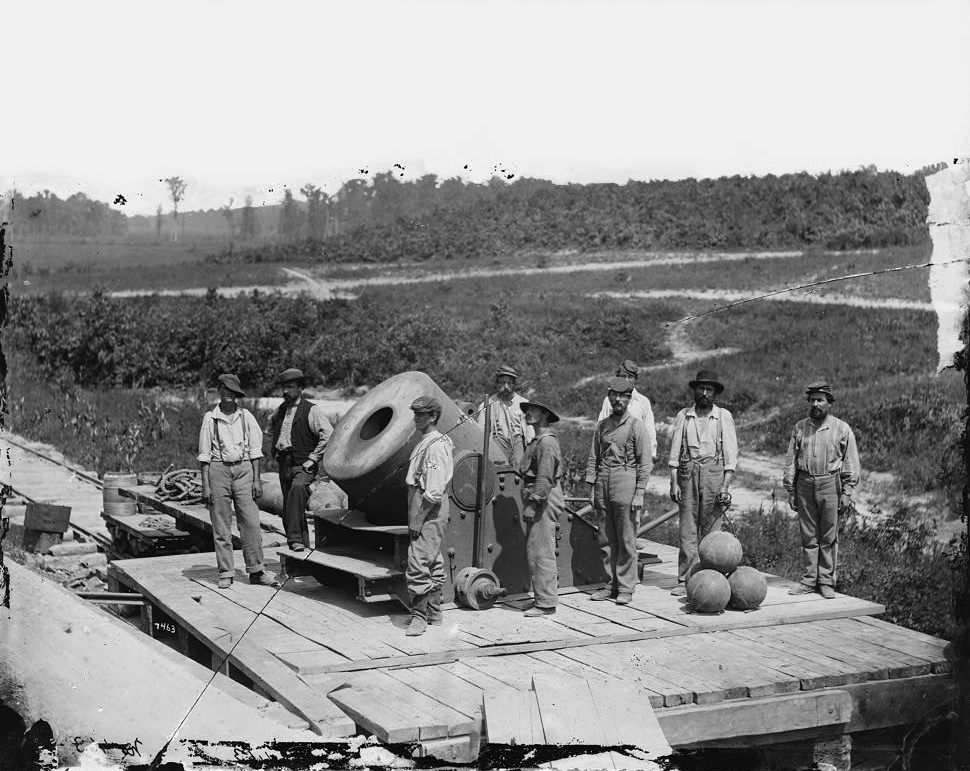
A photograph showing a “Dictator” mortar in use during the seige of Petersburg, 1864. (Photo: Library of Congress)
If the Civil War was the last gunpowder war, given the sheer number of Americans involved, it seems likely that many would have some familiarity with an explosive of that kind. But another aspect of American culture helped to popularize that image—editorial cartoons.
By the mid-19th century, many papers across the country featured editorial cartoons. The most famous was probably Harper’s Weekly, often considered the most widely read publication during the Civil War. Their illustrations featured caricatures of politicians, depictions of the treatment of slaves, and of course, battles. In one cartoon, a smoking bomb with the face of who appears to be General Scott is lobbed toward Jefferson Davis. The bomb is round with a skinny, string wick sticking out of the top. Comics like that made it pretty clear just what a bomb looked like.
In 1867, Alfred Nobel invented dynamite, which Kelly said was quickly and widely “publicized at that time as the weapon of the people,” something easily accessible and easy to make at home. It seems that spherical gunpowder bombs would be on their way out. But another widely publicized event may have sealed their images in the minds of the populace. In 1886, a labor demonstration in Chicago’s Haymarket Square was thrown into riot by a dynamite bomb, but one that reportedly resembled a stereotypical mortar bomb. According to the New York Times accounts of the riots, a group of men arrived on a wagon, and from it “something rose up into the air, carrying with it a slender tail of fire.”

A depiction of the Haymarket Riot, 1886. (Photo: Public Domain/WikiCommons)
Three days after the bombing, police searched the house of anarchist Louis Lingg, who was suspected to have made the bombs, and found two spherical dynamite bombs with metal casings. Given that dynamite is enough of an explosive, the metal casings were likely not used to hold in pressure, but to cause damage as metal shards flew into the crowd. The prosecution used these bombs as evidence in the trial of eight suspects, and testified that they matched the chemical makeup of the bombs used in the Haymarket riot.
The trial was heavily covered in the press, and again Harper’s Weekly provided images. In one, a bearded anarchist is seen standing over a spherical bomb, and in another Lady Justice holds one labeled “law” over a panicked crowd. It didn’t matter if they were gunpowder bombs or not. The image was the same.
The image of the wiry, bearded anarchist for a time was just as prevalent, but as our fears about who was carrying the bomb changed, the bomb itself stayed the same. Wile E. Coyote blew himself up multiple times with one. The characters in Spy v. Spy planted them on each other. And recently, outside the cartoon world, Israel’s prime minister Binyamin Netanyahu presented a diagram about Iran’s nuclear capabilities using that iconic bomb image.
The spherical bomb has staying power because it’s an image everyone can agree upon. A “realistic” bomb can look like anything—a grouping of wires in a box, a flat mine, and in the case of the Boston Marathon bombing, a pressure cooker. And while a few images have rivaled its ubiquity (a bundle of red dynamite tied to a ticking clock, a box labeled TNT) none of those have been visually compelling enough to replace the black sphere.
It doesn’t matter if it’s been 150 years since bombs looked like that. If you saw a black sphere with a burning wick, you’d probably run.

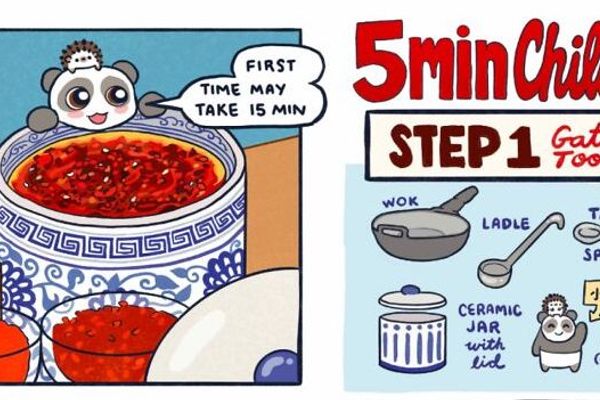
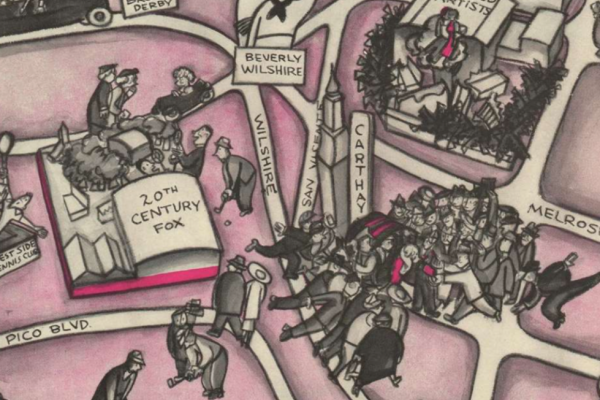
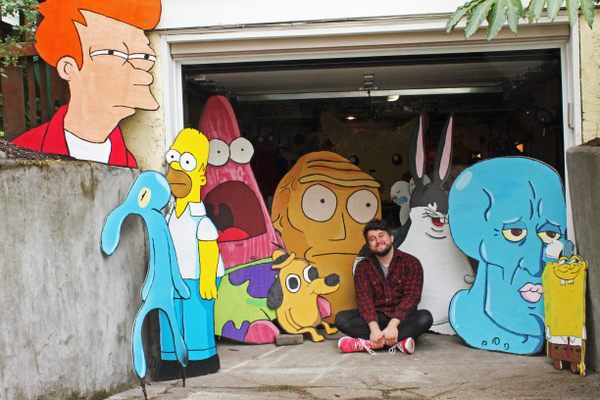



Follow us on Twitter to get the latest on the world's hidden wonders.
Like us on Facebook to get the latest on the world's hidden wonders.
Follow us on Twitter Like us on Facebook